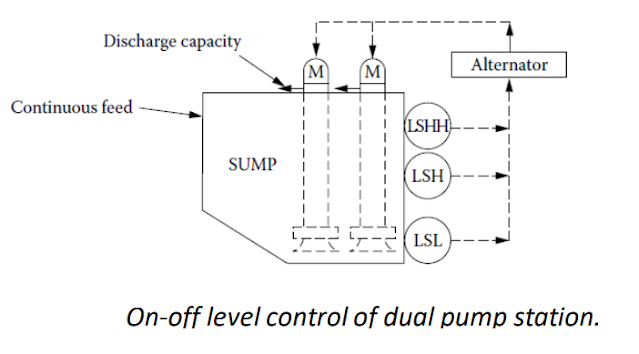Start/Stop Sequence In Pumps When the running adjustable speed pumps are near their maximum speeds and when more flow is needed, the capacity of the pumping station must be increased by starting another pump. Similarly, when all pumps are at a low speed and less flow is needed, a pump must be stopped. It is necessary to know the maximum pump speed a pump can run at and still deliver zero flow (called omega zero, ωo), the pressure up to which the flow remains zero (shut-off pressure). This is the pressure that a starting pump must overcome before it can start delivering flow (superimposed back-pressure), and the flow delivered by an adjustable-speed centrifugal pump, which is running against the back-pressure, which is superimposed by the other operating pumps.


.png)



.jpg)
.png)
.png)
.png)
.png)
.png)